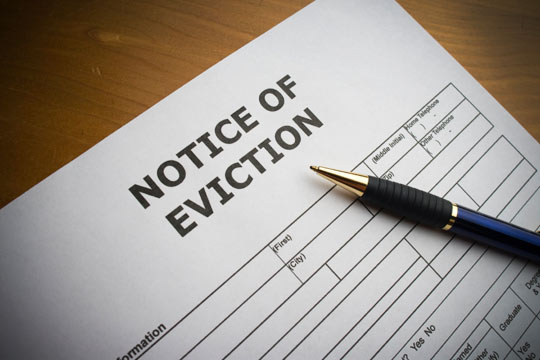70% of area landlords have at least one tenant facing eviction. This program can help

Moreover, the survey of 100 Fayette County landlords shows that more than 60 percent had at least one tenant who could not pay rent in April.
Gov. Andy Beshear temporarily suspended evictions for nonpayment of rent in late March. during the peak of the coronavirus pandemic. Moreover, the Kentucky courts have stopped all eviction-related filings. But when Kentucky courts reopen come June 1, the number of people facing evictions could overwhelm the court system later this summer.
A group of nonprofits, landlord and apartment groups have started a COVID-19 rental assistance program to help stem the number of evictions this summer.
The COVID-19 Renter Help program can help answer questions about tenant rights, advise on how to communicate with landlords, put tenants in touch with available resources and help tenants mediate resolutions with landlords.
The goal is to come up with solutions that will let tenants stay in their homes long term, not just pay one month’s rent, said Art Crosby, the executive director of the Lexington Fair Housing Council, one of the 20 agencies involved in COVID-19 Renter Help program.
The group has created a central online intake system for Fayette County renters who need help with rent. That online portal is at www.covid19renterhelp.org. People who do not have internet access can call a central intake line at 859-474-7235. It’s free but only available to Fayette County renters.
Working with landlords to mediate payment options is a key part of the program, Crosby said.
If a tenant is evicted through the courts, that eviction tarnishes the renter’s credit and makes it difficult to find new housing.
Sharon Price, the executive director of the Community Action Council, which helps low-income individuals through a variety of programs, said the group’s goal is to combine resources and money to maximize the number of people served.
“We are going to take various funding sources and layer them together,” Price said.
Price said the group is looking at a combination of federal stimulus money, grants and private funding for the eviction mitigation program.
“Housing stabilization is so important during COVID-19,” Price said. That’s particularly true for families with young children, she said.
Brenda Wells, executive director of the Greater Lexington Apartment Association, said the association supports the COVID 19 Renter Help program because evictions hurt tenants and landlords alike.
“We want to work with tenants, and we don’t want people to be displaced,” Wells said. But renters need to tell their landlords if they are struggling to make payments or can’t pay rent. Lexington landlords are working with tenants in a variety of ways to make sure people can stay in their homes.
But landlords can’t work with tenants if they don’t know the tenant is struggling, she said.
Approximately 80 percent of landlords who responded to the survey have waived late fees, nearly 70 percent have worked with tenants on payment plans, and 5 percent have waived at least one month rent, the survey found.
The survey found 72 percent of landlords support a mediation program.
But the survey also found that the majority of landlords cannot go more than three months without income from those rental properties. Wells, whose group represents large apartment complexes, said she is not aware of a Lexington apartment complex that is owned outright. All those complexes have mortgages, utilities and personnel costs to pay.
The survey shows that property owners that serve low-income households — those that charge under $750 — are the landlords who have the most tenants unable to pay rent.
That’s not surprising to Crosby.
“That parallels with the reports we’re seeing from the landlords and the actual calls for assistance that we’re receiving,” Crosby said.
But it’s those in the most affordable rental units that are most at-risk for becoming homeless.
Crosby and Wells said as more companies lay off and furlough employees, landlords of mid-to-higher end apartments will also see more tenants struggling to pay rent.
Landlords also said that rental assistance programs should be prioritized and not be administered on a first-come, first-served basis.
Rather, any funds available should go to low-income renters at risk of homelessness, renters whose landlords have worked with the renters on payment plans, renters with children and renters who can demonstrate they have lived in a unit for an extended period.
The survey of landlords also found:
69 percent have between o to 4 percent of tenants facing eviction
18 percent have between 5 to 10 percent of tenants facing eviction
5 percent had 50 percent of more tenants facing eviction
3 percent had between 15 to 20 percent of tenants facing eviction
Source: kentucky.com















 Accessibility
Accessibility